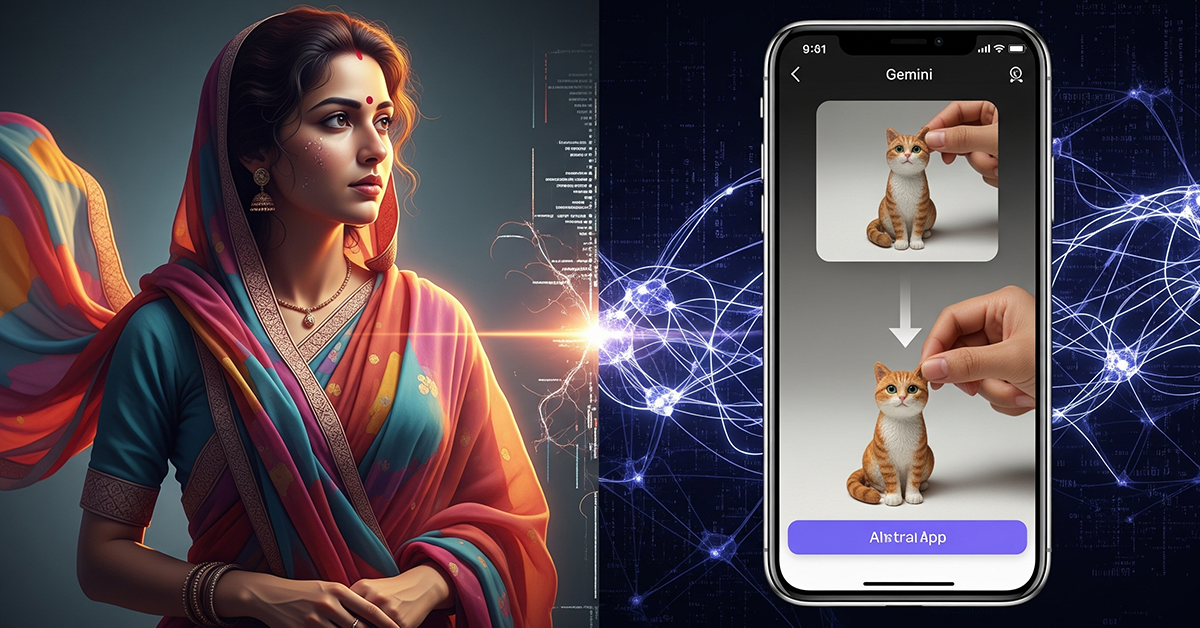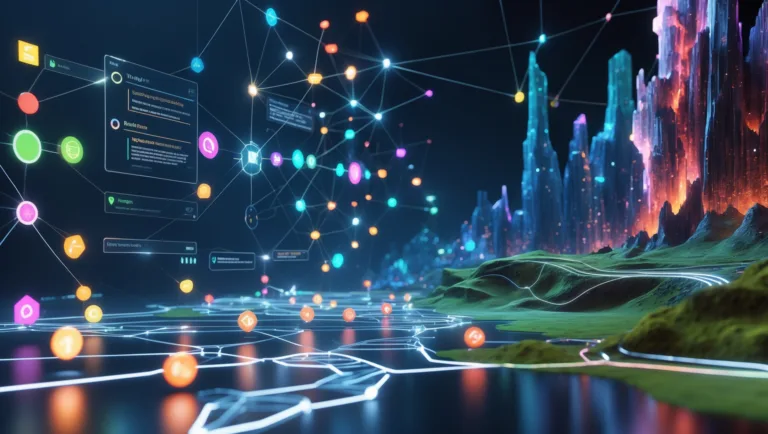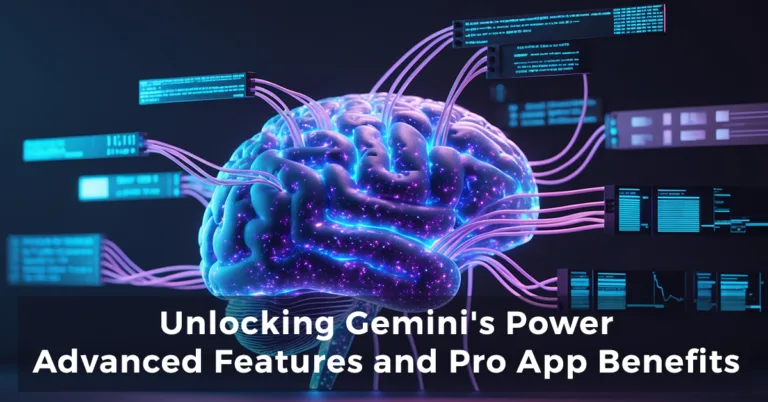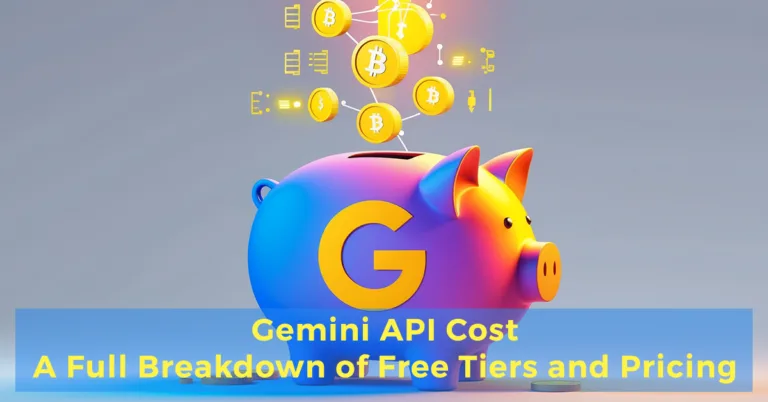In the ever-accelerating world of artificial intelligence, a seismic shift is occurring, one that is reshaping the very fabric of creativity. What was once the exclusive domain of skilled artists, photographers, and designers is now becoming accessible to anyone with an idea and a willingness to explore. At the forefront of this revolution is Google’s groundbreaking AI, Gemini, and its latest, most talked-about innovation: a powerful image generation and editing model affectionately nicknamed Google Gemini Nano Banana. This is not just another tech update; it is a paradigm shift, a new paintbrush for the digital age, and it’s already making waves across the globe, most notably through the viral “AI saree trend” that has captivated social media.
This article will serve as your definitive guide to this transformative technology. We will journey deep into the core of what makes Google Gemini Nano Banana so special, exploring its revolutionary features, its cultural impact, and its profound implications for the future of art and media. We’ll provide comprehensive tutorials for both beginners and advanced users, unlocking the secrets to crafting breathtaking images from simple text prompts. Whether you’re a seasoned creative professional looking to streamline your workflow, a marketer aiming to create compelling visual content, a developer interested in the advanced features of the Gemini API, or simply a curious individual eager to unleash your inner artist, this in-depth exploration will equip you with the knowledge to navigate and master this exciting new frontier.
- Deconstructing the Phenomenon: What is Google Gemini Nano Banana?
- The AI Saree Trend: A Cultural Moment in the Making
- Your Ultimate Guide to Mastering Google Gemini Nano Banana
- The Bigger Picture: Implications, Ethics, and the Future
- The Horizon of Imagination: What's Next for AI Art?
- Conclusion: The Canvas is Yours
Deconstructing the Phenomenon: What is Google Gemini Nano Banana?
Before we delve into its myriad applications, it’s essential to understand what Google Gemini Nano Banana truly is. The playful name is a moniker for what is officially known as Gemini 2.5 Flash Image, a state-of-the-art image model developed by the brilliant minds at Google DeepMind. This technology represents the latest evolution of image generation within the Gemini ecosystem, as detailed in Google’s official announcement, and is designed to be more intuitive and integrated than ever before.. Unlike many of its predecessors that operated as standalone applications or required complex setups, Nano Banana is seamlessly integrated into the conversational interface of the Gemini app. This design choice is fundamental to its appeal, transforming the act of image creation and editing from a technical task into a natural, intuitive dialogue.
At its heart, Nano Banana is a multimodal AI, meaning it can understand and process information from different formats—in this case, text and images—simultaneously. This allows for an unprecedented level of control and creativity, which can be broken down into several key, game-changing features:
1. Native, Conversational Image Editing: This is perhaps the most significant leap forward. Users can upload their own photographs directly into the Gemini app and begin editing them using simple, natural language commands. There’s no need for layers, selection tools, or complex software. You can simply “talk” to your image. Want to change the background of a family photo to a serene beach? Just ask. Need to remove a distracting object from a product shot? A simple instruction is all it takes. This feature has been used for everything from turning a pet into a 16-bit video game character to placing an adult version of oneself in a tea party with their younger self, showcasing a level of creative freedom that was previously unimaginable for the average user.
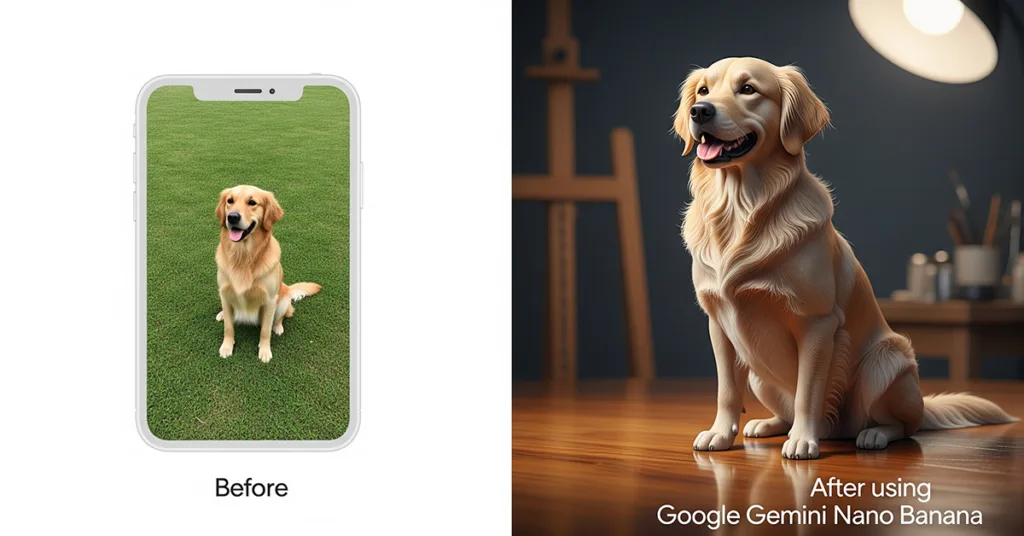
2. Groundbreaking Character and Subject Consistency: For years, a major hurdle for AI image generators has been the inability to maintain the identity of a person or object across multiple images. You could create a stunning portrait of a fictional character, but generating an image of that same character in a different pose or setting was nearly impossible. Nano Banana has made remarkable strides in solving this problem. It can recognize and “remember” the key features of a subject from an initial image, allowing you to place that same character in a variety of new scenes, outfits, and even artistic styles. This is a monumental development for storytellers, animators, and brand marketers who rely on consistent visual narratives.
3. Intelligent Multi-Image Fusion: This feature opens up a new realm of creative composition. Nano Banana can take two or more separate images and intelligently blend them into a single, cohesive scene. The possibilities are boundless. You can merge a portrait with a landscape to create a surrealist masterpiece, combine a product shot with a lifestyle image to craft the perfect advertisement, or even fuse different textures and patterns to design something entirely new. The model understands spatial relationships and lighting, allowing it to create fused images that are not just collages, but believable new realities.
4. Precision Through Prompt-Based Editing: The level of detail you can control with text is astonishing. You can go beyond broad commands and make targeted, precise edits. For instance, you could ask Gemini to “make the subject’s eyes blue,” “add a subtle reflection in the window,” or “change the season from summer to autumn by altering the foliage.” This granular control empowers users to fine-tune their creations to perfection, iterating on an image until it precisely matches their vision.
5. From Photos to Figurines: The 3D Miniature Craze: One of the earliest trends to showcase Nano Banana’s unique capabilities was the “AI figurine” craze. Users discovered they could upload photos of themselves, their friends, or their pets and, with a simple prompt, transform them into incredibly realistic images of custom miniature figures. This went viral because it was a perfect demonstration of the model’s ability to not only understand the subject of a photo but to creatively reimagine it in a completely different form factor, complete with realistic textures, lighting, and depth of field.
For developers and enterprises looking to harness these capabilities within their own applications, Google has made the model accessible through the Gemini API and Vertex AI. Understanding the Gemini API cost structure is a crucial first step for businesses aiming to integrate this powerful technology into their platforms.
The AI Saree Trend: A Cultural Moment in the Making
While the figurine trend was a fascinating display of technical prowess, it was the “AI saree trend” that truly cemented Google Gemini Nano Banana’s place in the cultural zeitgeist. Seemingly overnight, social media feeds were flooded with stunning, dreamlike portraits of users reimagined in vintage sarees, looking as if they had stepped directly out of a 1990s Bollywood film.
This was more than just a filter; it was a collaborative act of creation between user and AI. The trend’s aesthetic is highly specific: the soft, flowing grace of chiffon sarees, the warm, nostalgic glow of golden-hour lighting, grainy film textures, and dramatic, moody backdrops. Users would upload their selfies and use detailed prompts to evoke this classic cinematic style, specifying everything from the color and pattern of the saree to the expression on their face.
The viral appeal of this trend can be attributed to several factors. Firstly, it taps into a deep well of cultural nostalgia and appreciation. The saree is an iconic garment, rich with history and meaning, and the 90s Bollywood aesthetic holds a special place in the hearts of millions. This trend allowed people to connect with their heritage and with a beloved era of cinema in a deeply personal and creative way. Secondly, it demonstrated the power of AI to not just generate generic images, but to capture nuanced cultural aesthetics with remarkable fidelity. The AI wasn’t just putting a “saree” on a person; it was understanding and recreating the entire vibe—the romance, the drama, the style—of a specific cultural moment.
Finally, and perhaps most importantly, it was incredibly accessible. Anyone with the Gemini app could participate. It democratized a form of high-concept art, allowing people with no prior experience in photography or graphic design to create professional-looking, emotionally resonant portraits. The trend became a global phenomenon, proving that AI can be a powerful tool for cultural celebration and self-expression, reviving the past in a vibrant, technicolor glamour.
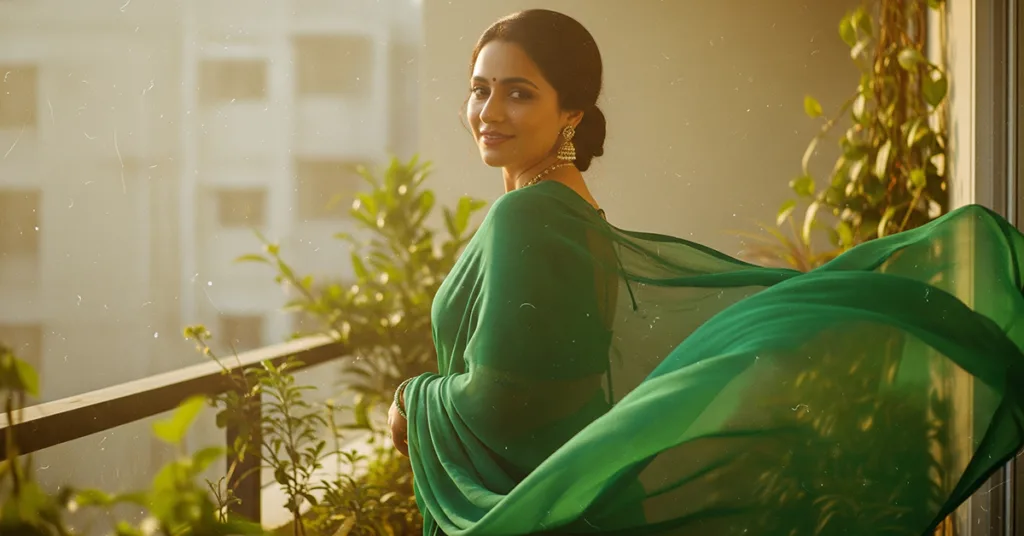
Your Ultimate Guide to Mastering Google Gemini Nano Banana
Now that we’ve explored the “what” and the “why,” let’s dive into the “how.” Whether you’re a complete novice or have some experience with AI tools, this guide will provide you with the knowledge to start creating and refining your own stunning images.
Getting Started: A Beginner’s Walkthrough
The beauty of Nano Banana lies in its simplicity. Here’s a step-by-step guide to creating your first masterpiece:
-
Access Gemini: The tool is directly integrated into the Gemini app. You can access it on your smartphone by downloading the app or by visiting the Gemini website on your desktop.
-
Start a Conversation: The interface is a simple chat window. You can either begin by typing a text prompt to generate an image from scratch or upload an existing photo to start editing.
-
The Art of the Prompt: Your prompt is the most crucial element. The key is to be descriptive and narrative. Instead of a list of keywords like “cat, sun, window,” write a sentence: “Create a photorealistic image of a fluffy ginger cat napping in a warm sunbeam on a rustic wooden windowsill.” The more detail you provide, the better the result will be. Think about the subject, the action, the setting, the lighting, and the overall mood.
-
Iterate and Refine: Your first generation is just the starting point. This is where the conversational nature of Gemini shines. Don’t like the color? Simply say, “Now, change the cat’s fur to a sleek black.” Want to alter the composition? Try, “Zoom out to show more of the room.” This iterative process of refinement is what makes Nano Banana feel less like a tool and more like a creative collaborator.
-
Editing Your Own Photos: Upload a clear, well-lit photo of yourself or a subject. Start with a simple edit. For example, upload a portrait and prompt: “Change the background of this photo to a bustling Tokyo street at night, with neon signs.” Or, “Give the person in this photo a vintage 1920s hairstyle.” Experiment with these simple changes to get a feel for how the AI interprets your commands.
For those who want to move beyond the app and start building their own AI-powered tools, getting a free Google Gemini API key is the first step on that exciting journey.
Advanced Techniques for Unleashing Your Creative Potential
Once you’ve mastered the basics, you can begin to explore the more powerful and nuanced features of Google Gemini Nano Banana. These techniques can elevate your creations from simple images to complex, narrative-driven works of art.
-
Achieving Character Consistency: This is one of the most powerful features for any form of storytelling. To create a series of images with the same character, follow this process:
-
Start by generating a clear, detailed image of your character. Your initial prompt should be very specific about their facial features, hair, and clothing. For example: “Generate an image of a female fantasy adventurer named Elara, with fiery red hair in a braid, green eyes, and wearing practical leather armor.”
-
Once you have an image you’re happy with, you can use it as the basis for future prompts. In the same chat conversation, you can now say: “Take the character from the previous image and place her in an ancient, vine-covered ruin.”
-
You can continue this process, changing the setting, action, and even the character’s expression, while Nano Banana works to maintain her core identity. This allows you to build a visual narrative, create a consistent brand mascot, or design a character sheet for a game.
-
-
Mastering Multi-Image Fusion: The key to successful image fusion is selecting images that have a clear subject and background.
-
Upload two images. For example, one image of your dog sitting in your living room and another image of a majestic mountain range.
-
Craft a prompt that clearly explains how you want to combine them. A good prompt would be: “Take the dog from the first image and place it seamlessly into the mountain landscape from the second image. Adjust the lighting on the dog to match the bright, outdoor sunlight.”
-
This technique is incredibly useful for product placement (placing a product in various lifestyle settings), creating fantastical portraits, or even for architectural visualization (placing a proposed building design into a real-world photograph).
-
-
Exploring a Universe of Styles: Don’t limit yourself to photorealism. Nano Banana is a master of artistic styles. You can transform any image by adding a stylistic modifier to your prompt.
-
Artistic Styles: Try phrases like “in the style of Vincent van Gogh,” “as a Japanese ukiyo-e woodblock print,” or “as a modern abstract sculpture.”
-
Cinematic Styles: Use prompts like “with a cinematic, film noir lighting,” “in the style of a Wes Anderson film, with symmetrical composition and a pastel color palette,” or “as a gritty, high-contrast shot from a sci-fi movie.”
-
Illustrative Styles: Experiment with “as a children’s book illustration,” “as a detailed technical blueprint,” or “as a vintage comic book panel.”
-
The more you experiment with these advanced techniques, the more you’ll begin to understand the model’s capabilities and how to bend them to your creative will. For a deeper dive into the environment where these models are tested and refined, exploring Google AI Studio is a must.
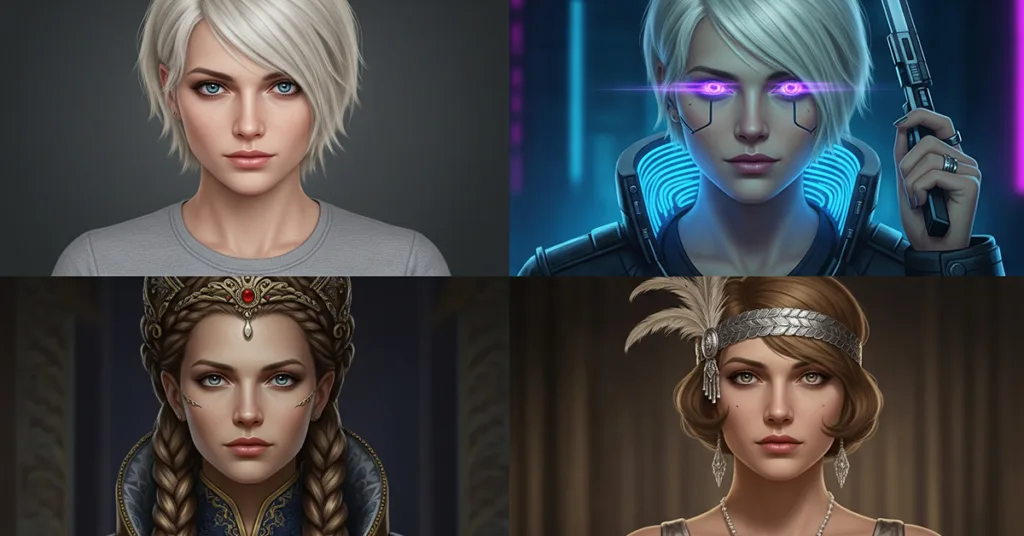
The Bigger Picture: Implications, Ethics, and the Future
The emergence of powerful tools like Google Gemini Nano Banana extends far beyond the realm of social media trends. It represents a fundamental shift with wide-ranging implications for society, industry, and our relationship with creativity itself.
The Democratization of Creativity
For centuries, the ability to create high-quality visual art was a skill honed through years of practice and often expensive training. Nano Banana and tools like it are dismantling these barriers. Now, anyone with a smartphone can become a creator. This democratization is empowering a new wave of artists, storytellers, and designers from all walks of life, leading to a more diverse and vibrant creative landscape. It allows small businesses to create professional marketing materials without a large budget, educators to generate custom illustrations for their lessons, and individuals to express their unique visions of the world.
A Paradigm Shift for Creative Industries
While some may view AI as a threat to creative professions, many professionals are embracing it as a powerful new tool in their arsenal.
-
For Graphic Designers: It can serve as an incredible brainstorming partner, generating dozens of concepts and mood boards in minutes. It can handle tedious tasks like background removal or object isolation, freeing up designers to focus on higher-level creative thinking.
-
For Photographers: It can be used for advanced retouching and creative editing, turning a standard portrait into a work of art. It can also be used to create virtual sets, allowing for photoshoots in exotic locations without ever leaving the studio.
-
For Marketers: It enables the rapid creation of A/B tested ad creatives, personalized marketing content, and consistent brand imagery across all platforms. The ability to quickly visualize products in different settings is a game-changer for e-commerce.
Navigating the Ethical Maze
With this immense power comes a significant responsibility. The potential for misuse is a serious concern, and the rapid advancement of these tools has sparked widespread discussion. The creation of convincing deepfakes, the spread of misinformation, and complex issues of copyright are challenges that, as leading tech journals have reported, our society must proactively address.
Google is taking proactive steps to promote responsible AI use. One of the most important is the integration of SynthID, a tool that embeds an invisible, permanent digital watermark into all images created or edited by Nano Banana. This watermark is designed to be detectable by a corresponding tool, allowing for the clear identification of AI-generated content. This commitment to transparency is a crucial step in building a trustworthy ecosystem where the benefits of this technology can be realized safely.
The Horizon of Imagination: What’s Next for AI Art?
We are still in the infancy of this technology. The pace of development in generative AI is exponential, and what seems like science fiction today will likely be a standard feature tomorrow. Looking ahead, we can anticipate even more incredible advancements:
-
AI-Generated Video: The principles behind image generation are already being applied to video. Soon, we may be able to generate entire animated sequences or even live-action-style video clips from a simple text prompt.
-
3D Model Generation: The “figurine” trend is a precursor to full 3D model generation. Imagine being able to create a detailed, game-ready 3D asset simply by describing it or uploading a few reference images.
-
Interactive and Collaborative AI: Future AI models may act as true creative partners, offering suggestions, collaborating on ideas in real-time, and helping to refine a user’s vision in a more dynamic and interactive way.
Conclusion: The Canvas is Yours
Google Gemini Nano Banana is more than just a clever piece of software; it is a testament to human ingenuity and a gateway to a new era of boundless creativity. It is a tool that empowers us to visualize our thoughts, to play with reality, to tell our stories, and to connect with our heritage in ways we never thought possible. The “AI saree trend” is a beautiful, fleeting example of its potential, but the true impact will be seen in the millions of individual acts of creation it inspires every day.
We have explored its features, dissected its cultural impact, and provided a roadmap for you to begin your own creative journey. Now, the canvas is yours. The tools are at your fingertips. The only remaining ingredient is your imagination. Open the Gemini app, start a conversation, and see what wonders you can bring to life. The future of art is not something to be passively observed; it is something to be actively created, and it starts now.

